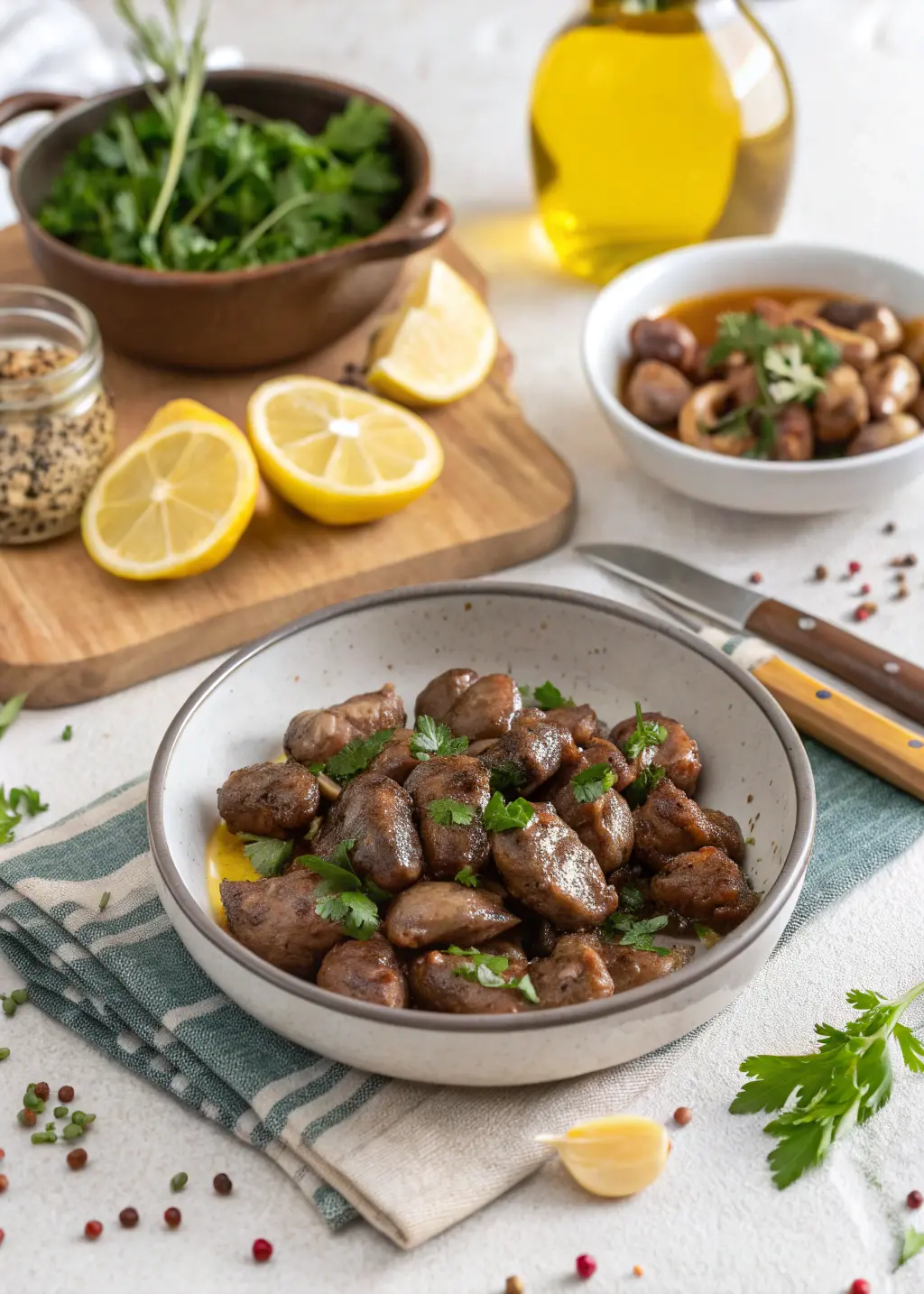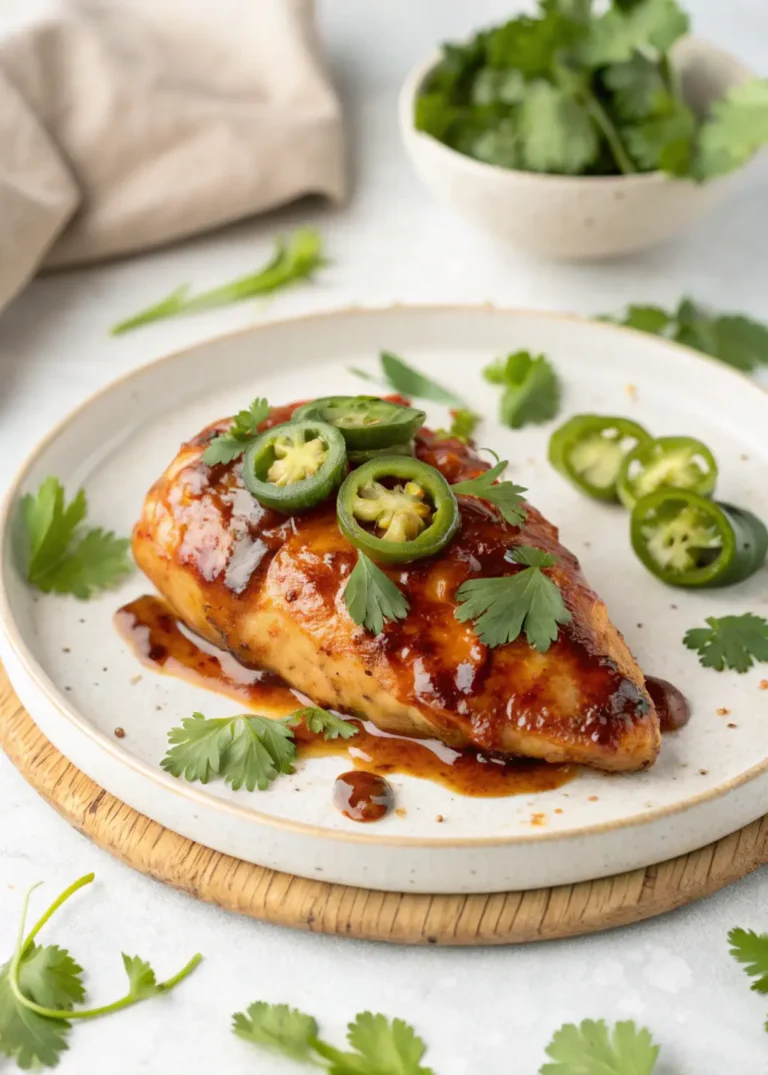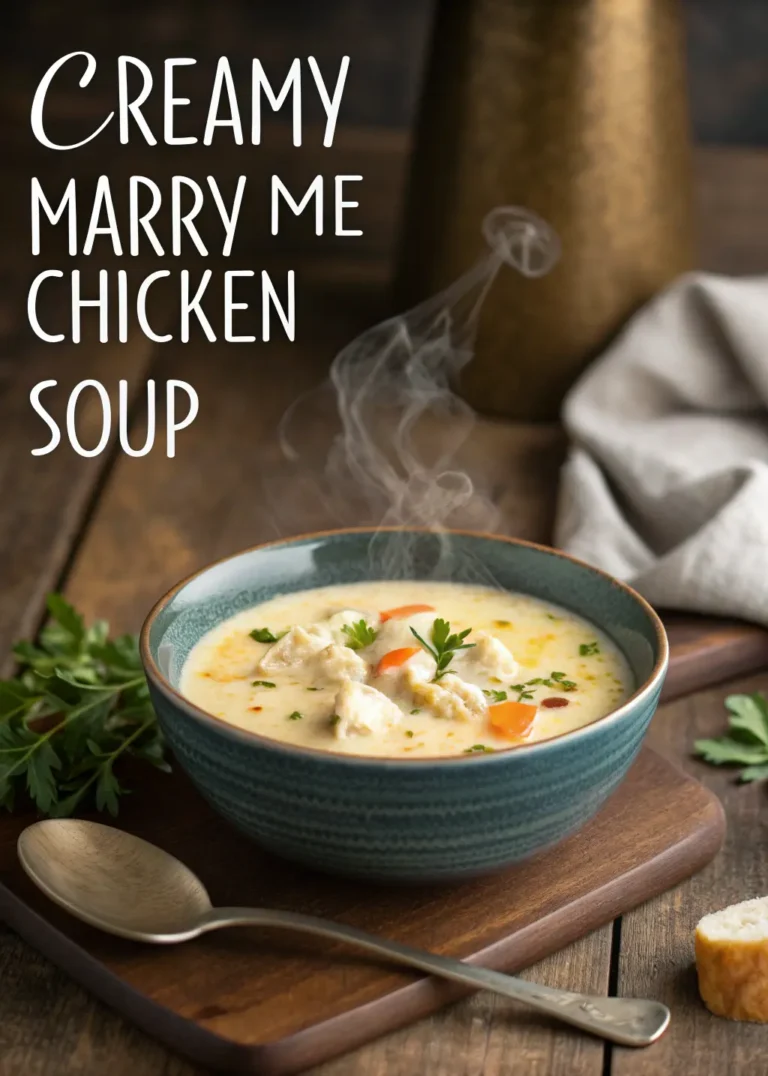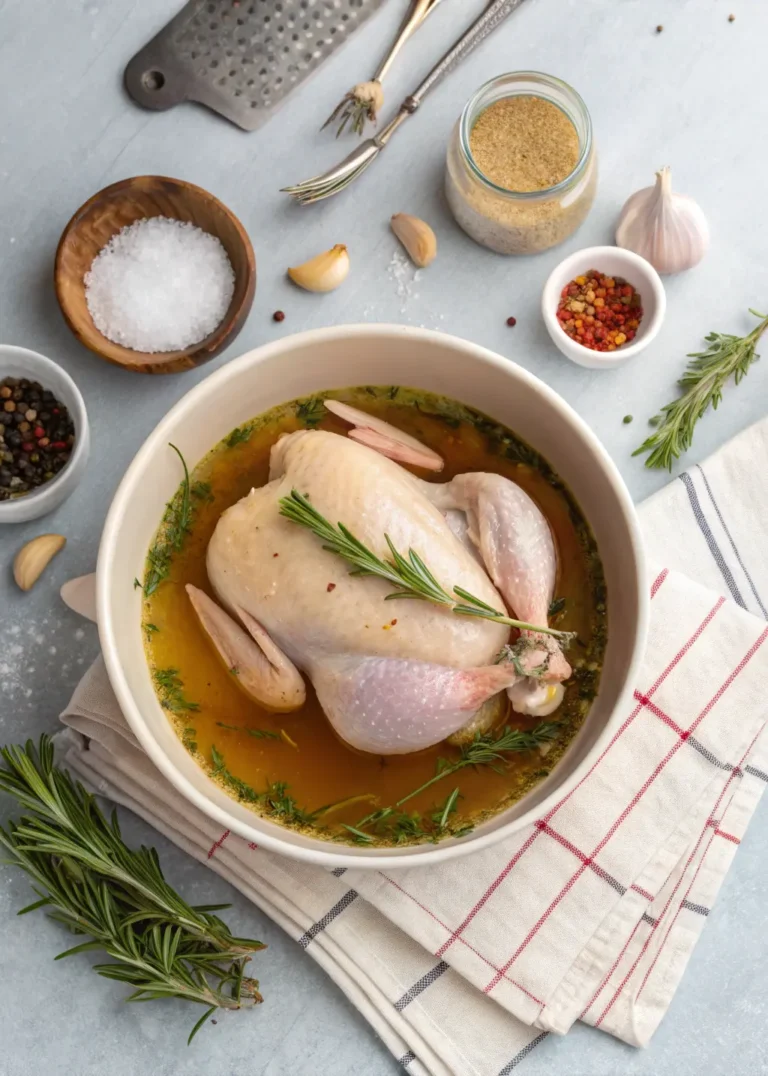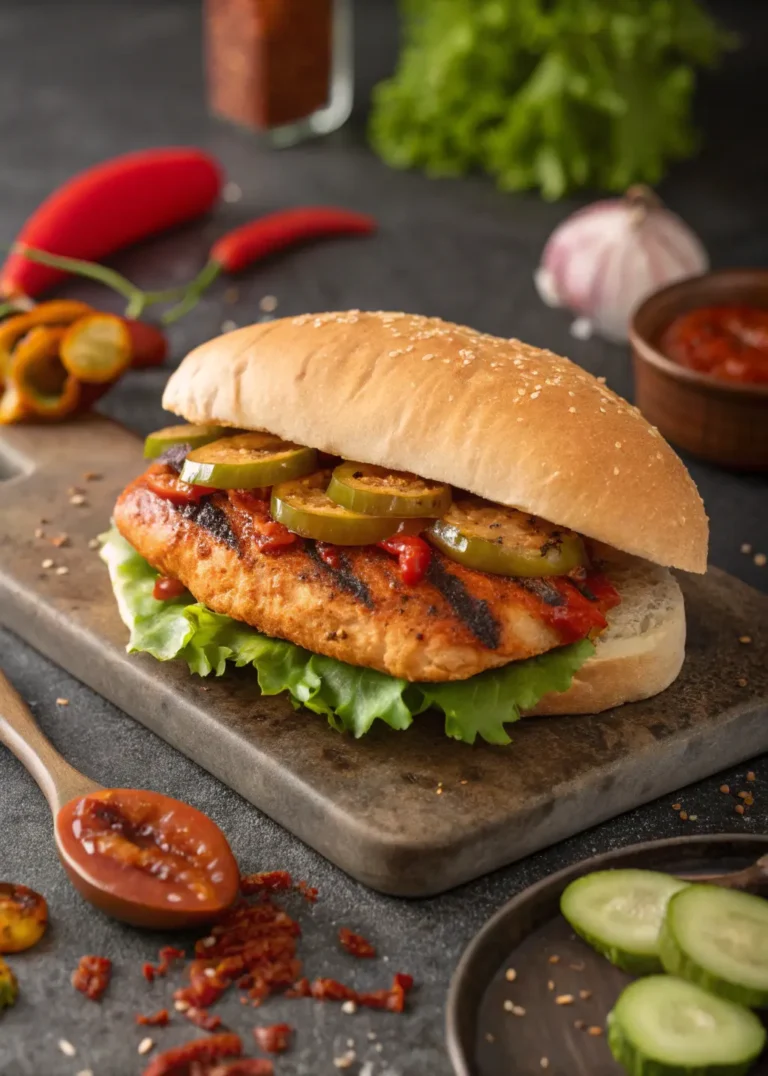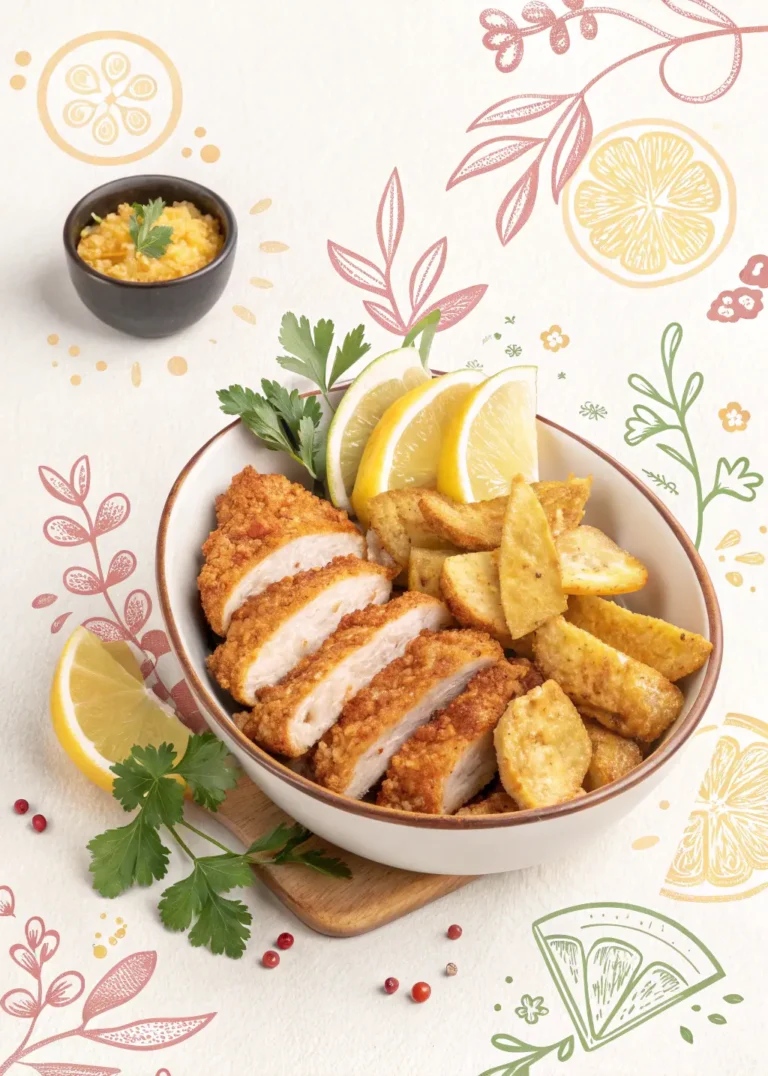Chicken Hearts: The Ultimate Beginner’s Guide to Cooking This Nutrient-Packed Delicacy
Standing before the refrigerated meat display, you spot a compact package labeled “chicken hearts” tucked between the familiar cuts. Your pulse quickens with curiosity, yet hesitation creeps in. “What exactly would I create with these?” echoes through your mind. This moment of uncertainty resonates with countless home cooks who feel overwhelmed by organ meats, despite chicken hearts being among the most approachable entry points into this nutritious culinary territory.
Your culinary adventure begins today. This comprehensive guide transforms your uncertainty into confidence, walking you through every aspect of preparing these miniature nutritional powerhouses. Once you master these techniques, chicken hearts will become a treasured addition to your weekly meal planning.
Table of contents
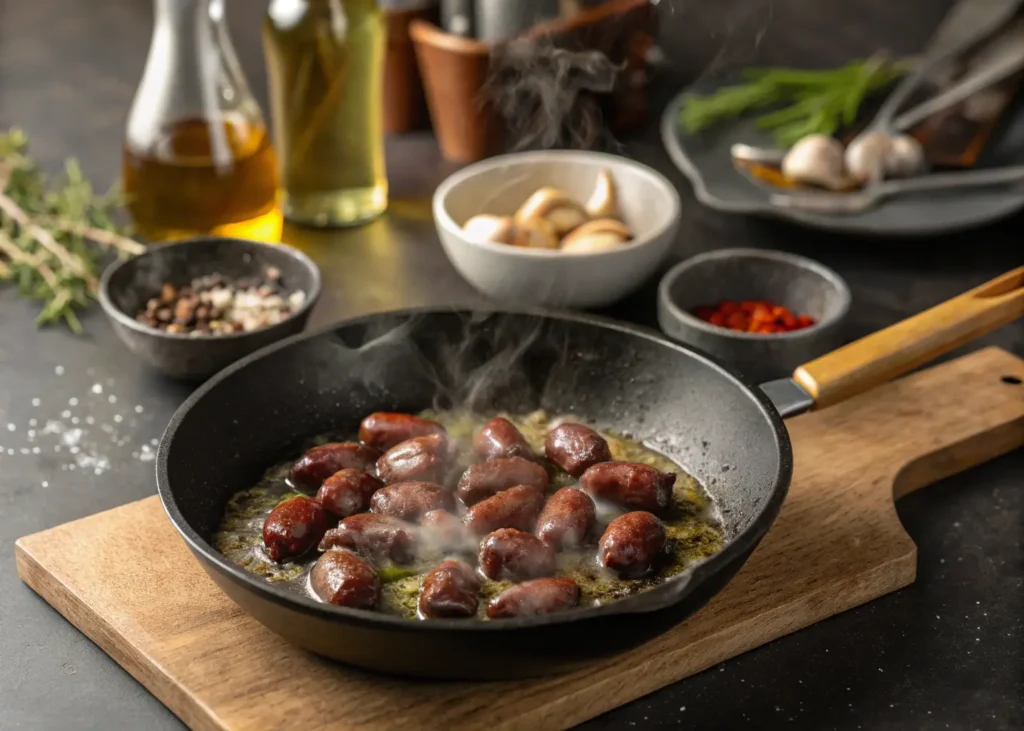
What Are Chicken Hearts and Why Should You Cook Them?
Understanding Chicken Hearts as a Protein Source
Chicken hearts function as muscular organs roughly the size of a grape, possessing a dense, meaty texture that surpasses regular poultry in richness. Unlike other organ meats that might intimidate newcomers, these hearts offer a familiar flavor profile reminiscent of dark meat chicken, amplified with deeper, more concentrated notes.
Each heart weighs approximately 8-12 grams, making portion control straightforward for meal planning. Their compact size allows for quick, even cooking while maintaining tender results when prepared correctly.
Nutritional Benefits of Chicken Hearts
Your body receives exceptional nutritional value from chicken hearts, particularly when compared to conventional protein sources. These organs deliver concentrated amounts of essential nutrients your system craves for optimal function.
| Nutrient | Per 100g Chicken Hearts | % Daily Value |
|---|---|---|
| Protein | 26.4g | 53% |
| Iron | 11.9mg | 66% |
| Zinc | 7.3mg | 66% |
| Vitamin B12 | 16.2mcg | 675% |
| Folate | 65mcg | 16% |
| Calories | 185 | 9% |
The impressive B12 content supports neurological health and energy production, while the abundant iron prevents deficiency-related fatigue. Zinc contributes to immune system strength and wound healing, making chicken hearts particularly valuable for active individuals or those recovering from illness.
How to Select and Prepare Chicken Hearts for Cooking
Buying the Best Chicken Hearts
Your success begins with selecting premium-quality hearts from reliable sources. Most conventional grocery stores stock frozen varieties in their specialty meat sections, while butcher shops often provide fresh options with superior flavor and texture.
Visual Quality Indicators
When examining potential purchases, focus on these critical characteristics:
- Color: Seek deep burgundy or rich red hues, avoiding any grayish or brown discoloration
- Texture: Choose firm, plump specimens that spring back when gently pressed
- Smell: Fresh hearts emit a clean, slightly metallic aroma without offensive odors
- Packaging: Ensure sealed containers display recent sell-by dates and proper refrigeration
Organic varieties often provide enhanced flavor profiles and come from animals raised without antibiotics or hormones, though conventional options remain perfectly safe and nutritious.
Essential Preparation Steps for Chicken Hearts
Proper preparation ensures optimal taste and texture while maintaining food safety standards. This process requires minimal time but significantly impacts your final results.
Step-by-Step Cleaning Process
Your preparation routine should follow this systematic approach:
- Rinse thoroughly under cold running water, removing surface debris
- Pat dry using paper towels to eliminate excess moisture
- Trim visible fat deposits and tough connective tissue with sharp kitchen shears
- Check carefully for blood clots, removing any discovered
- Final rinse and thorough drying before seasoning
Essential Equipment and Ingredients for Cooking Chicken Hearts
Kitchen Tools You’ll Need
Your cooking success depends on having appropriate equipment readily available. Fortunately, preparing chicken hearts requires only basic kitchen implements most home cooks already possess.
Essential tools include a sharp paring knife for precise trimming, a dedicated cutting board for meat preparation, and a heavy-bottomed skillet for even heat distribution. Cast iron or stainless steel pans work exceptionally well, providing the consistent temperatures necessary for proper searing.
Pantry Staples and Seasoning Options
Building flavor requires thoughtful ingredient selection that complements rather than overwhelms the hearts’ natural taste. Your spice cabinet likely contains most necessary seasonings already.
| Ingredient Category | Recommended Options | Purpose |
|---|---|---|
| Cooking Fats | Butter, olive oil, avocado oil | High-heat cooking, flavor |
| Basic Seasonings | Salt, black pepper, garlic powder | Foundation flavors |
| Herbs | Thyme, rosemary, sage, parsley | Aromatic enhancement |
| Acids | Lemon juice, balsamic vinegar | Tenderizing, brightness |
| Aromatics | Onions, garlic, shallots | Depth of flavor |
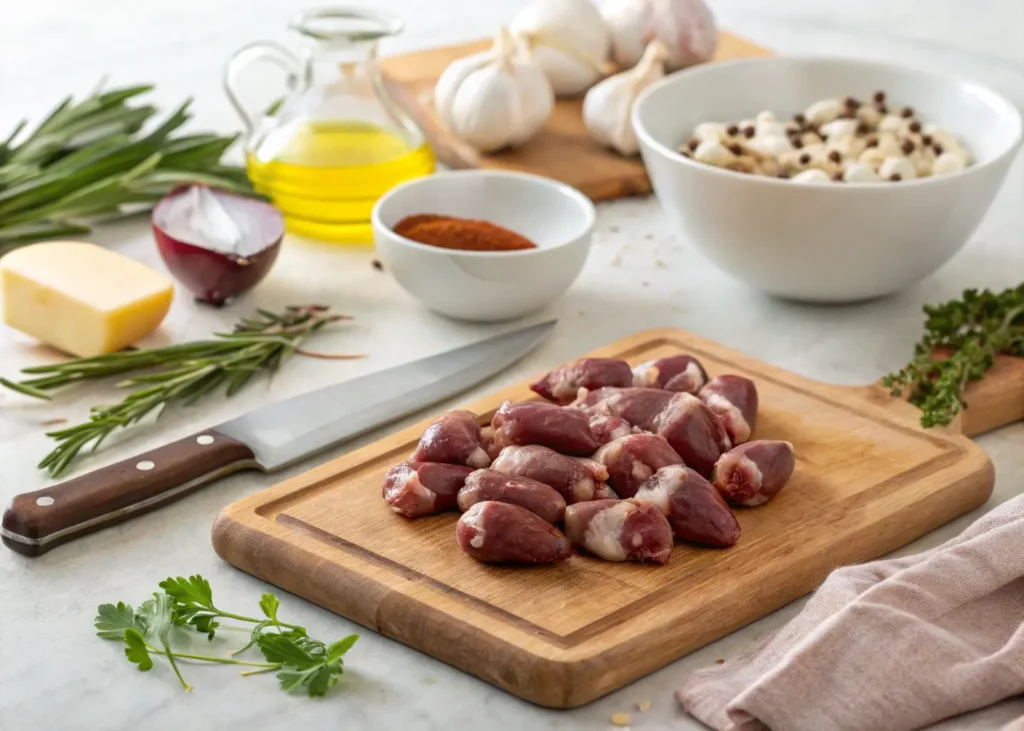
Step-by-Step Cooking Methods for Perfect Chicken Hearts
Pan-Searing Method (Recommended for Beginners)
Pan-searing delivers consistently excellent results while remaining accessible to novice cooks. This technique creates beautiful caramelization while preserving tender interiors.
Perfect Pan-Seared Chicken Hearts Recipe
Ingredients:
| Ingredient | Amount | Notes |
|---|---|---|
| Chicken hearts | 1 lb | Cleaned and trimmed |
| Olive oil | 2 tbsp | For cooking |
| Butter | 2 tbsp | For finishing |
| Salt | 1 tsp | To taste |
| Black pepper | ½ tsp | Freshly ground |
| Garlic | 3 cloves | Minced |
| Fresh thyme | 1 tbsp | Or 1 tsp dried |
Cooking Instructions:
- Preheat your skillet over medium-high heat until a water droplet sizzles immediately
- Season hearts generously with salt and pepper, allowing flavors to penetrate
- Add oil to the heated pan, swirling to create even coverage
- Place hearts in a single layer, avoiding overcrowding that prevents proper browning
- Sear undisturbed for 2-3 minutes until golden crust develops
- Flip carefully and cook another 2-3 minutes for medium doneness
- Add aromatics during the final minute, stirring to release fragrances
- Rest briefly before serving to allow juices to redistribute
Your finished hearts should register 165°F internal temperature while maintaining slight pink centers for optimal tenderness.
Flavor Combinations and Recipe Variations
Classic Seasoning Blends for Chicken Hearts
Different cultural approaches offer exciting flavor possibilities for your chicken heart preparations. Mediterranean combinations featuring oregano, lemon, and olive oil create bright, herbaceous profiles perfect for summer dining.
Asian-inspired preparations incorporate soy sauce, fresh ginger, and sesame oil for umami-rich results that pair beautifully with steamed rice. Latin American seasonings like cumin, smoked paprika, and fresh lime juice add warmth and complexity that complements hearty side dishes.
Traditional European preparations often feature sage, butter, and white wine, creating elegant flavors suitable for sophisticated dinner parties.
Complete Meal Ideas Featuring Chicken Hearts
Your chicken hearts pair exceptionally well with creamy polenta, roasted vegetables, or simple pasta preparations. Consider serving over mixed greens with warm vinaigrette for lighter meals, or alongside mashed potatoes for comfort food presentations.
Rice pilaf, quinoa salads, and crusty bread all provide excellent foundations that absorb the hearts’ flavorful juices while adding textural contrast.
Troubleshooting Common Chicken Hearts Cooking Problems
Preventing Tough or Chewy Texture
Overcooking represents the most common mistake when preparing chicken hearts. These organs cook rapidly due to their small size and dense muscle structure. Monitor cooking times carefully and remove from heat once internal temperatures reach safe levels.
If your hearts turn out tough, slice them thinly against the grain before serving. This technique breaks down muscle fibers mechanically, improving perceived tenderness significantly.
Addressing Flavor Concerns
Some people find organ meats possess stronger flavors than conventional cuts. Marinating hearts in acidic solutions like wine, vinegar, or citrus juice for 2-4 hours before cooking helps mellow intense tastes while adding complementary flavors.
Pairing with mild, creamy sauces or serving alongside neutral starches helps balance any perceived intensity while allowing you to adjust gradually to new flavor profiles.
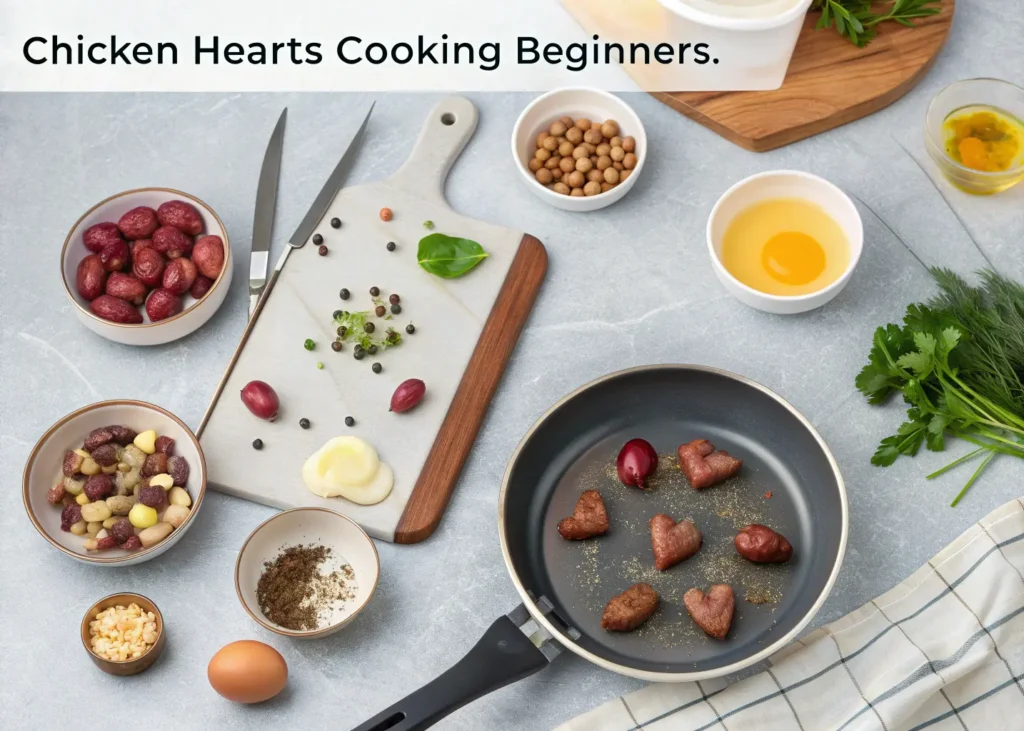
Frequently Asked Questions About Cooking Chicken Hearts
Q: Are chicken hearts safe to eat for beginners? A: Absolutely. Chicken hearts pose no additional safety risks when handled properly and cooked to recommended internal temperatures of 165°F.
Q: How do I know when chicken hearts are fully cooked? A: Use a meat thermometer to verify internal temperature reaches 165°F. Properly cooked hearts feel firm but not hard, with no pink remaining when cut open.
Q: What do chicken hearts taste like? A: Chicken hearts offer concentrated chicken flavor with slightly metallic notes, similar to dark meat but more intense. The texture resembles tender, small steaks.
Q: Where can I buy chicken hearts if my grocery store doesn’t carry them? A: Check specialty butcher shops, ethnic markets focusing on Latin American or Asian cuisines, farmers markets, or order online from specialty meat suppliers.
Q: How long do chicken hearts take to cook? A: Pan-seared hearts cook completely in 4-6 minutes total, while braised preparations may require 15-20 minutes for maximum tenderness.
Conclusion
Your journey into cooking chicken hearts opens doors to new nutritional benefits, exciting flavors, and budget-friendly protein options. These techniques transform intimidating ingredients into accessible, delicious meals that impress family and friends while expanding your culinary repertoire.
Begin with simple pan-searing methods, experiment with various seasonings that appeal to your preferences, and embrace the learning process. Each preparation builds confidence and skill, gradually making chicken hearts a natural part of your cooking routine.
Ready to start your chicken hearts adventure? Head to your local butcher or specialty market this week and pick up a pound of fresh chicken hearts. Try the pan-searing recipe outlined above, share your results with friends and family, and discover why adventurous cooks worldwide treasure these nutritional powerhouses. Your taste buds—and your body—will thank you for taking this delicious leap into organ meat cookery.
Have you given our recipe a try?
There are no reviews yet. Be the first one to write one.

